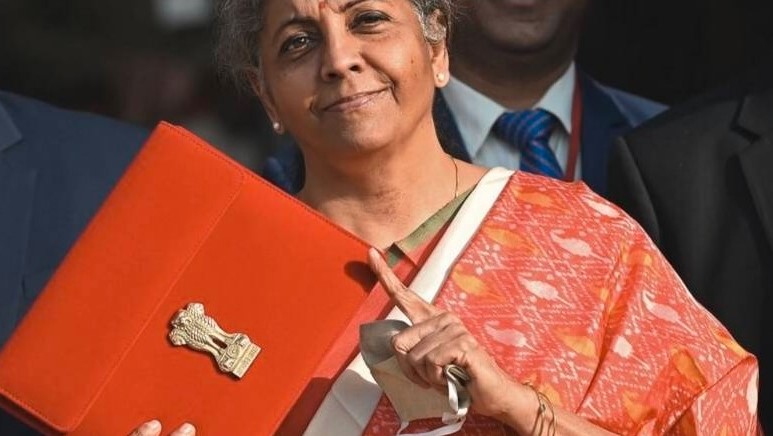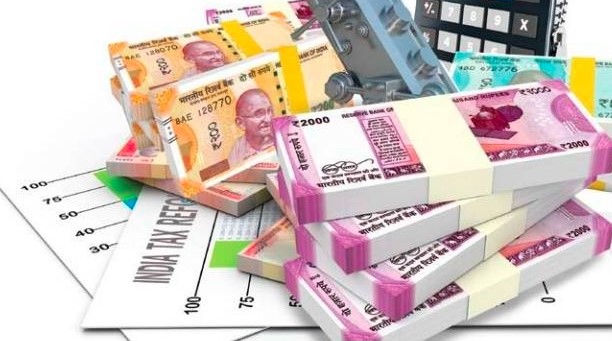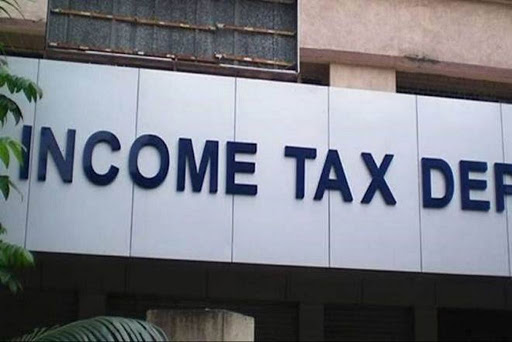India Union Budget 2021: Key tax reforms
The government has left direct taxes unchanged, but took steps in direct tax incentives to ease compliance for taxpayers.
Senior citizens above 75 years of age with only pension and interest incomes have been exempted from filing tax returns, Finance Minister Nirmala Sitharaman announced on Monday.
While tabling the Union budget 2021-22 in Parliament, the minister said that the number of income tax return filers has increased to 6.48 crores now from 3.48 crores in 2014.
The government has left direct taxes unchanged, but took steps in direct tax incentives to ease compliance for taxpayers.
“We shall reduce the compliance burden on our senior citizens who are 75 years of age and above. For senior citizens who have pensions and interest income, I propose exemption from filing their income tax returns. The paying bank will deduct the necessary tax from their income,” she said.
Here are the other key tax proposals
* Exemption from filing income tax returns for senior citizens (75 years and above) who only have pension and interest income. The paying bank will deduct the necessary tax on their income.
* Reducing time limit for reopening of income tax assessment.
* Constitution of a dispute resolution committee for small tax payers
* Income tax appellate tribunal to be made faceless
* Increase in limit for tax audit for persons who carry out 95% of their transactions digitally
* Dividend payment to REIT/InvIT (real estate investment trusts and infrastructure investment trusts) to be exempted from TDS
* Pre-filling of returns will also cover capital gains from listed securities, dividend income, etc
* Eligibility for claiming tax holiday for start ups proposed to be extended by one more year
* Additional deduction of Rs1.5 lakh shall be available for loans taken up till March 31, 2022 for purchase of affordable house
India Budget 2021: Why the country is in dire need of tax reforms
Tax compliance in India has always been abysmal. However, the Modi administration is trying to make the framework simpler and people-friendly, amid the challenges of Covid-19.
Amongst the biggest challenges any Indian finance minister faces is how to mop up more revenue to fund the government expenditure on defence, social welfare, and health. It’s a country where interpretation of tax can be arbitrary and revenue leakages are high. For the current incumbent, Nirmala Sitharaman, the task will be even more onerous when she gets up to present the budget for the next financial year, which begins on April 1 and ends on March 31, amid the raging coronavirus outbreak that has singed growth and drastically whittled down revenue.
The Indian economy is the world’s sixth largest at around $2.7 trillion and the Narendra Modi-led government aims to make it $5 trillion by 2024, the year he goes for re-election for a third consecutive term. India’s population is estimated to be over 1.3 billion. The statistics compare poorly, as compared to the number of taxpayers in the country.
Prime Minister Modi put the figure of only 15 million in context during a summit last year.
Data shows only 1.15 per cent of India’s population pays taxes.
The low taxpayer base also means that India’s tax to gross domestic product (GDP) ratio is amongst the lowest in the world. The financial year 2020 (April-March) ratio of central taxes-to-GDP was 9.88%, a 10-year low amid the contagion.
As per the data available on the Organisation for Economic Co-operation and Development’s (OECD) website, the average tax-to-GDP ratio for OECD countries was 33.9% in 2018. For the US, it was 24.4% and above 40% for countries such as France, Denmark, Belgium, and Sweden.
No wonder, India has a long way to go.
A lower ratio restricts the government’s ability to spend on creating infrastructure and social welfare schemes. It leaves the government with fewer options other than to borrow from the market to fund its expenditure, which, in turn, further widens its fiscal deficit.
India broadly levies two types of taxes at the central level – direct and indirect. Direct tax is levied on the income of individuals and companies. Indirect taxes are levied both by the Centre and the states though most of them were subsumed under the Goods and Services Tax (GST), which was launched on July 1, 2017. Duties on import of goods and services also come under the GST net. GST rates are determined by a majority decision of the GST Council, a body comprising the central and state finance ministers. This means that a lot depends on which party rules in the majority of those states.
Certain products and services such as petrol and diesel, aviation turbine fuel remain outside the purview of the GST Council with each state levying its excise duty or value-added tax on those items. Many items of mass consumption like bread, milk, salt, fruits, and vegetables are part of GST but attract zero tax.
The Indian government is the biggest litigant in courts on tax-related matters. This is because of ambiguity on tax laws and their various interpretations by individuals, companies, experts, tax officers, and the tribunals adjudicating on those matters.
To be sure, the government realises the complexities in tax administration and has tried to untangle them in the past.
The 2020-21 budget announced a ‘Vivad Se Vishwaas’ (From Dispute to Trust) scheme that allowed for settling tax disputes between individuals and the income tax (I-T) department. Under the scheme, I-T disputes settled under it could not be reopened in any other proceeding by the department or any other designated authority. This followed a similar scheme for indirect tax ‘Sabka Vishwas’ (Everyone’s Trust). The two schemes yielded mixed results.
A poor tax-to-GDP ratio reflects poor tax compliance –– an outcome of high tax rates, loopholes allowing people to either escape the tax net fully or skip paying taxes by showing fake bills or non-existent expenditure in their books. India doesn’t tax its farmers, a politically-sensitive constituency, while also allowing big rebates to businesses.
In a country like India, where tax compliance has always been abysmal, a government is left with little choice but to milk those whose records are available
Nonetheless, the Modi government has made several attempts to reduce litigation and cut down on face-to-face assessment. Tax filing, as well as the settlement of most disputes, is online.
However, the Modi administration is trying to make the tax framework just, simpler and people-friendly
It needs to raise revenues, abolish rental mechanisms and improve compliance to boost growth. The three objectives aren’t mutually exclusive but need an enabling and robust framework.
In September 2019, India unveiled one of the biggest corporate tax cuts, making them amongst the most competitive in the world. Companies willing to forgo all exemptions can now opt to pay a 22 per cent tax rate. India’s peak corporate tax rate is 25.17 per cent inclusive of surcharge and cess. Also, such companies are not required to pay Minimum Alternate Tax (MAT).
Individuals do not enjoy the relaxed rates that corporates do. The peak personal income tax is at 42.7 per cent. The wide gap of 17 per cent calls for a need to rationalise personal tax rates. The peak rate in the Direct Tax Code (DTC) report is 35 per cent. The government has been working on framing an entirely new direct tax code for some years now. This report was prepared by experts and has been awaiting implementation for the past one-and-a-half-years.
While the government takes time to resolve legal and moral conflicts, there is no denying that a cut in personal tax rates will go a long way in expanding the tax base, increasing compliance and boosting consumption.
As forecast by multilateral agencies like the International Monetary Fund (IMF) and the country’s Economic Survey for 2020-21, tabled in Parliament on January 29, Covid-19 will take a toll on India’s growth and tax collections for the year ending March 31, 2021. As per the survey, the economy will take two years to return to its pre-pandemic levels.
In such a scenario, reducing tax rates will result in higher growth rate and aid economic recovery. Revenue foregone for higher growth seems to be a better choice than tax shortfall.
India’s gross tax revenue for April-November stood at Rs10.26 trillion, which was a 12.6 per cent dip from the same period a year ago and 42.4 per cent of the budgeted amount.
The findings of the Reserve Bank of India (RBI), the country’s central bank, will help in Sitharaman’s decision making.
According to a study cited by the country’s central bank though not endorsed by it, household financial savings in the June quarter jumped to 21.4 per cent of GDP, up from 7.9 per cent in the same quarter a year ago and 10 per cent in January-March of 2020.
Even as DTC remains a work-in-progress, Sitharaman could explore steps to tap into the extra savings to channelise them into boosting consumption in other ways as well. Tax-saving conditional allowances could be given to the salaried. Much like the tax rebate on housing loans, she could also consider a one-time tax exemption on the purchase of a four-wheeler or any other big purchase to spur consumer spending.
As work-from-home (WFH) is now a reality owing to Covid-19, expenses on items like laptops, tablets, mobiles, routers and printers could also form part of the exemption. This would also help to boost the government’s Digital India and Atmanirbhar (self-reliance) initiatives.
As India aims to massively increase its spending on infrastructure and renewable energy to power its plants, railways, and automobiles, Sitharaman could look at allowing some of its own companies and sector-focused institutions such as Power Finance Corporation (PFC), National Highways Authority of India (NHAI) and Indian Railways Finance Corporation (IRFC) to issue tax-free bonds that the general public could subscribe to.
While the general trend over the last few years has been towards removing exemptions and removing ambiguity in tax laws, a one-time breather in a bid to boost spending may not be unwise. The same could be extended to select sectors to help companies that are worst hit by Covid-19.
The GST, though outside the purview of the budget, also needs the urgent attention from the government. There are nine GST rates and 22 types of compensation cess, a far cry from the ‘Good and Simple Tax’ that it was supposed to be in the words of PM Modi himself.
The implementation of independent India’s biggest tax reform has turned out to be more than a little challenging for both taxpayers as well as the authorities. To be sure, those many rates and various types of cess need to be trimmed and so do the number of items that attract nil GST even though it will be an unpopular move. A revenue-neutral tax rate needs to be reached and most items put under that.
The government has taken steps to curb fake invoicing in GST. A little bump in economic activity and the government’s moves to curb fake invoicing saw GST collections rise to Rs. 1.15 trillion in December 2020, a record high since the new indirect tax regime came into place in 2017.
The Modi government can only push for any GST proposal. But amid the Covid-19 challenge where tax revenues have been severely hit, a consensus amongst the member states at the GST Council, the approving authority, may find it a daunting task.
India is in dire need of tax reforms. Tax is a derivative of economic activity and not vice-versa and incremental nudges go a long way in making people change their habits and adhere to the laws of the land.
As India next year reclaims the title of the fastest-growing large economy in the world with an 11.5% jump, according to projections of the IMF, it would do well to have more taxpayers and fewer tax disputes.
And the time starts now.
Source:https://www.khaleejtimes.com/business/india-budget-2021-why-the-country-is-in-dire-need-of-tax-reforms
India launches ‘transparent taxation’
At present, only the tax department/officer of the city where the PAN of the taxpayer is registered can scrutinise the tax records.
Indian Prime Minister Narendra Modi on Thursday launched a ‘transparent taxation’ platform, among other schemes, aimed at carrying forward the journey of direct tax reforms.
The move brings into effect faceless assessment of taxpayers, faceless appeals and the Rights’ Charter for taxpayers who would not be harassed or treated with suspicion from here on.
Speaking at the launch of ‘Transparent Taxation Honouring the Honest’, Modi said that India is among a few countries giving such rights and dignity to taxpayers. He said that the charter has been introduced with defined rights and responsibilities. From here on, the income tax department cannot doubt anyone without basis, he added.
Modi believes the structural reforms will add a new dimension, adding that these should be policy-driven and holistic. He cited that technology has changed, allowing for the scrutiny process to be distributed randomly. Furthermore, he said that the tax scrutiny rate was reduced by a fourth in the last few years; in fiscal year, there was only 0.26 per cent scrutiny.
Speaking of the recent measures, he said that nearly 300,000 cases were resolved under the Vivaad Se Vishwas scheme. He also appealed to citizens, sayin that those who are capable of paying taxes but not in the tax net should also voluntarily pay dues.
Even though the new ‘taxpayer’s charter’ is aimed at residents, non-resident Indians (NRIs) also will benefit from this proposal. India now joins countries like the United States and Canada, which have fundamental rights enacted under their income tax laws.
“For NRIs, this means less hassles from the tax bureaucracy; now, the taxpayer will know what to expect from the department. The new tax regime has also expanded the scope of faceless assessment and has done away with territorial jurisdiction while substituting individual discretion with team-based assessment,” said Bal Krishen, chairman of Century Financial.
“Many NRIs face problems due to the arbitrary nature in which some income tax officers behave; the new system will prevent this harassment. Nonetheless, the new system does have some drawbacks. For example, if there are complex international financial transactions, it might be challenging for the taxpayer to explain the transaction in the absence of a face-to-face interaction. Only a qualified tax officer will be able to take a well-informed decision and hopefully the entire department will be trained on these aspects. For the NRI, from an overall perspective, the new system is certainly a step forward.”
Dixit Jain, managing director at The Tax Experts DMCC, said: “A lot of transparency will come as there will be faceless interaction with assessees, which will reduce harassment and fair judgement without any manipulation. It will increase confidence; also, more and more people will file tax returns to contribute to the country.”
Jain added that earlier, a lot of NRIs were afraid to file tax returns as they used to think that if they file, they will get notices from the income tax department and will then have to face unnecessary trouble while dealing with officers.
“The introduction of the ‘No Influence’ policy and no face-to-face interaction will encourage NRIs to happily declare their eligible income and pay taxes or claim refunds without any worry. It is a brilliant move by the Modi government to encourage more people to file tax returns so it can contribute to the Indian economy.”
The launch of the Transparent taxation – honouring the honest is based on easing compliance for all taxpayers, more specifically for NRI’s – and is a welcome initiative. Few reforms were already in practice with most of the notice and assessments being conducted under e-proceedings, says Dubai-based Kinjal Bagadia Mehta, chartered accountant and tax consultant.
This initiate will lead to the digitisation of the functioning of the Income Tax department which will eventually eradicate corruption, harassment of the taxpayers and reducing litigation. At present, only the tax department/officer of the city where the PAN of the taxpayer is registered can scrutinise the tax records. By launch of Transparent taxation system, this will change now and with technology, scrutiny will be assigned to tax officers randomly. This will keep changing constantly.
“The idea of honouring honest taxpayers through such a platform will encourage many NRIs to participate in development and growth of India. This will also go a long way in making the tax filing process smoother and easier. A NRI will now be assured of fair, courteous, and rational behaviour from taxman. This people centric and public friendly approach will ease being tax compliant in India ultimately giving confidence to NRIs to file the tax returns, pay tax and also invest in India,” said Mehta.
Source:https://www.khaleejtimes.com/business/global/india-launches-transparent-taxation


